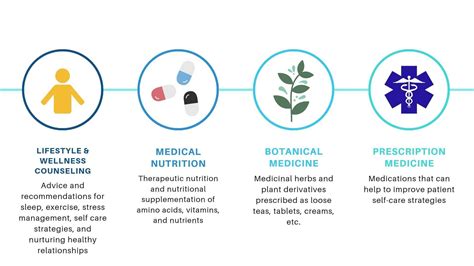How to optimize recovery for peak male performance & injury resilience?

The Underrated Cornerstone of Peak Male Performance
In the relentless pursuit of strength, endurance, and overall physical prowess, many men meticulously plan their training, track their progress, and analyze their performance. However, a critical component often overlooked or undervalued is recovery. Recovery isn’t merely passive rest; it’s an active, multi-faceted process essential for muscle repair, hormonal balance, nervous system regeneration, and cognitive function. Without a robust recovery strategy, performance plateaus, overtraining becomes a risk, and the likelihood of injury skyrockets.
For men aiming for optimal strength, sustained energy, mental clarity, and a body that resists wear and tear, prioritizing and optimizing recovery is not just beneficial—it’s absolutely non-negotiable. It’s the secret weapon that allows your body to adapt, rebuild stronger, and come back more resilient than before.
Pillar 1: The Power of Quality Sleep
Sleep is arguably the single most important recovery tool. It’s during deep sleep cycles that your body produces the majority of its human growth hormone (HGH), vital for tissue repair, muscle growth, and fat metabolism. Insufficient or poor-quality sleep impairs cognitive function, reduces reaction time, decreases strength, and elevates cortisol levels, which can lead to muscle breakdown and increased inflammation.
Aim for 7-9 hours of uninterrupted, quality sleep each night. Establish a consistent sleep schedule, even on weekends. Create an optimal sleep environment: dark, cool, and quiet. Avoid screens emitting blue light for at least an hour before bed, and limit caffeine and heavy meals late in the evening. Investing in your sleep is directly investing in your performance and injury resilience.

Pillar 2: Fueling Recovery with Strategic Nutrition
What you put into your body directly impacts its ability to recover. Post-workout nutrition is crucial, but consistent, nutrient-dense eating throughout the day provides the building blocks for repair and regeneration. Focus on these key elements:
- Protein: Essential for muscle protein synthesis (MPS). Aim for 0.7-1 gram of protein per pound of body weight daily, distributed across meals.
- Complex Carbohydrates: Replenish glycogen stores depleted during exercise, providing sustained energy for recovery processes.
- Healthy Fats: Crucial for hormone production, nutrient absorption, and reducing inflammation. Think avocados, nuts, seeds, and olive oil.
- Hydration: Dehydration significantly impairs performance and recovery. Drink plenty of water throughout the day, especially around workouts. Electrolytes can also be beneficial during intense training.
- Micronutrients: Vitamins and minerals play a vital role in countless biochemical reactions necessary for recovery, immunity, and overall health. Consume a wide variety of fruits and vegetables.

Pillar 3: Active Recovery and Mobility
While rest is important, complete inactivity can sometimes hinder recovery. Active recovery involves low-intensity exercise that increases blood flow, helping to deliver nutrients to muscles and remove metabolic waste products without adding significant stress. Examples include light walking, cycling, swimming, or yoga.
Mobility work, stretching, and foam rolling are also critical. These practices help to improve range of motion, release muscle knots, reduce stiffness, and correct muscular imbalances that can lead to injury. Incorporate dynamic stretches before workouts and static stretches or foam rolling after workouts and on rest days.

Pillar 4: Mastering Stress and Mental Well-being
Chronic psychological stress can be just as detrimental to recovery as physical stress. Elevated cortisol levels due to ongoing stress can impair muscle repair, suppress immune function, and interfere with sleep. Integrating stress management techniques into your daily routine is vital for overall recovery and resilience.
Practices such as mindfulness meditation, deep breathing exercises, spending time in nature, engaging in hobbies, or simply allocating time for relaxation can significantly lower stress levels. Mental recovery is intrinsically linked to physical recovery; a calm mind contributes to a calm and efficient body.

Integrative Strategies for Optimal Recovery
Beyond the core pillars, several other strategies can further enhance your recovery:
- Listen to Your Body: Pay attention to persistent soreness, fatigue, decreased performance, or mood changes. These are signals your body needs more recovery. Don’t be afraid to take an extra rest day or implement a deload week.
- Cold and Heat Therapy: Practices like cold showers, ice baths, or saunas (used cautiously and appropriately) can aid in reducing inflammation, improving circulation, and promoting relaxation.
- Smart Supplementation: While never a replacement for foundational pillars, certain supplements can support recovery. Creatine, branched-chain amino acids (BCAAs), magnesium, and omega-3 fatty acids are popular choices, but always consult with a healthcare professional before starting any new regimen.
- Consistency and Routine: Implement recovery protocols into your daily and weekly routine, making them as much a priority as your training sessions.

Conclusion
Optimizing recovery is not a luxury; it’s a fundamental requirement for any man striving for peak performance and long-term injury resilience. By diligently addressing sleep quality, strategic nutrition, active recovery, mobility, and stress management, you empower your body to adapt, grow stronger, and withstand the demands of intense training and daily life. Embrace a holistic approach to recovery, and you’ll unlock unparalleled levels of performance, sustain your fitness journey, and build a truly resilient body.








